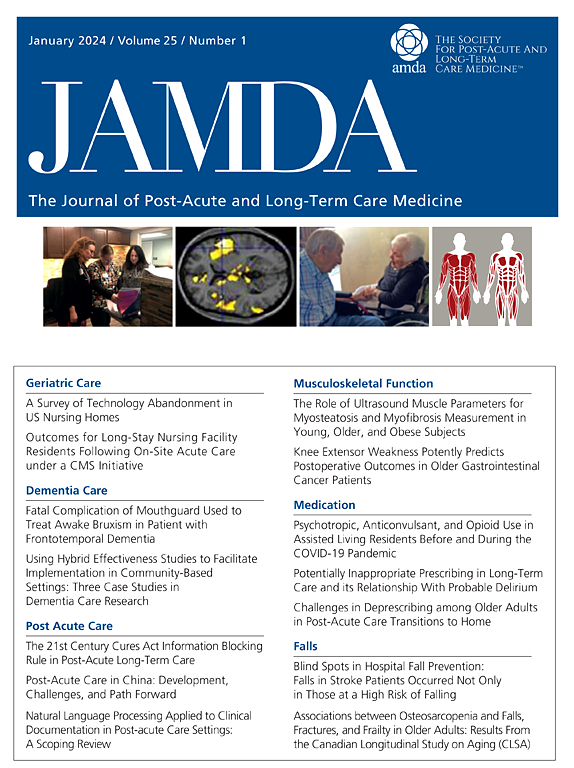Consumer-Directed Personal Care in the New York Metropolitan Area: Trends in Use From 2017 to 2022
IF 4.2
2区 医学
Q2 GERIATRICS & GERONTOLOGY
Journal of the American Medical Directors Association
Pub Date : 2025-03-17
DOI:10.1016/j.jamda.2025.105535
引用次数: 0
Abstract
Objectives
Despite growing interest in expansion of consumer- (or self-) directed models of Medicaid-funded personal care, research characterizing program use is limited. We leverage health plan and claims data from a large health plan in New York to examine (1) trends in use of consumer-directed care and (2) the impact of the COVID-19 pandemic on consumer-directed care use.
Design
Retrospective cohort study.
Setting and Participants
All individuals enrolled in a large, New York health plan who received Medicaid-funded personal care between January 2017 and December 2022 (n = 47,216).
Methods
Proportion of enrollees receiving consumer-directed care during each month and year was calculated for all enrollees and the subgroups of new and existing enrollees. An interrupted time series model was estimated to examine time trends and impact of the COVID-19 pandemic onset on trends.
Results
Between 2017 and 2022, the proportion of enrollees receiving consumer-directed care increased from 10.3% to 47.9%. Sociodemographic characteristics and average personal care hours remained stable. Models identified a 6% yearly increase in the proportion of enrollees using consumer-directed care pre-pandemic, (P < .001) an immediate 4% bump in use in March 2020 at the onset of the COVID-19 pandemic (P = .001), and an 8% yearly increase in use post pandemic onset (P = .01). Although trends among existing enrollees mirrored overall trends, new enrollees had larger increases in consumer-directed care use early in the study period, which leveled off after March 2020.
Conclusions and Implications
While there was a statistically significant and sustained increase in the proportion of enrollees receiving consumer-directed care at onset of the COVID-19 pandemic, the magnitude of this increase was small in comparison with overall program growth between 2017 and 2022. Additional work to understand how other factors contribute to enrollees choosing consumer-directed care is needed to ensure all Medicaid-funded personal care recipients can have their needs met in the community.
求助全文
约1分钟内获得全文
求助全文
来源期刊
CiteScore
11.10
自引率
6.60%
发文量
472
审稿时长
44 days
期刊介绍:
JAMDA, the official journal of AMDA - The Society for Post-Acute and Long-Term Care Medicine, is a leading peer-reviewed publication that offers practical information and research geared towards healthcare professionals in the post-acute and long-term care fields. It is also a valuable resource for policy-makers, organizational leaders, educators, and advocates.
The journal provides essential information for various healthcare professionals such as medical directors, attending physicians, nurses, consultant pharmacists, geriatric psychiatrists, nurse practitioners, physician assistants, physical and occupational therapists, social workers, and others involved in providing, overseeing, and promoting quality

 求助内容:
求助内容: 应助结果提醒方式:
应助结果提醒方式:


